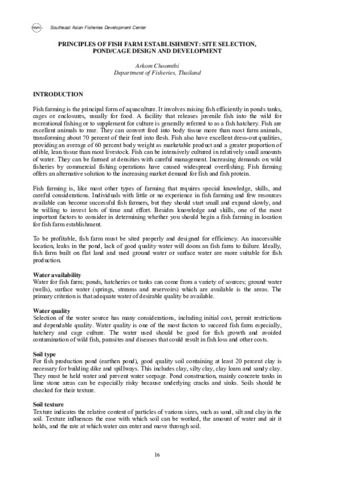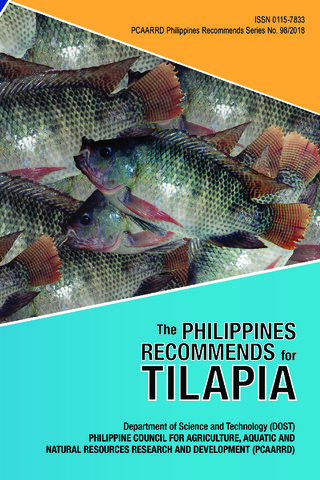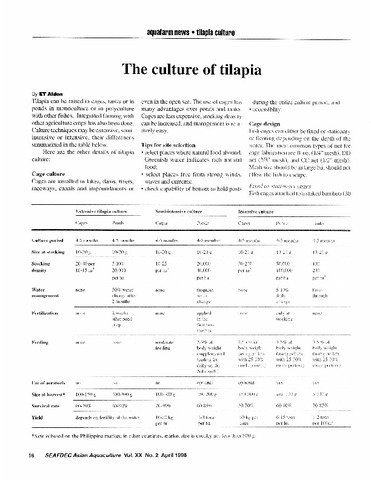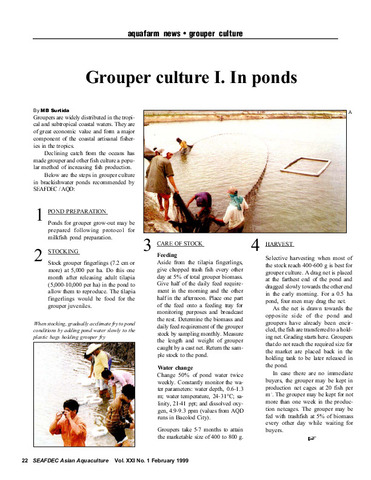Principles of fish farm establishment: Site selection, pond/cage design and development
Share
Abstract
Fish farming is the principal form of aquaculture. It involves raising fish efficiently in ponds tanks, cages or enclosures, usually for food. A facility that releases juvenile fish into the wild for recreational fishing or to supplement for culture is generally referred to as a fish hatchery. Fish are excellent animals to rear. They can convert feed into body tissue more than most farm animals, transforming about 70 percent of their feed into flesh. Fish also have excellent dress-out qualities, providing an average of 60 percent body weight as marketable product and a greater proportion of edible, lean tissue than most livestock. Fish can be intensively cultured in relatively small amounts of water. They can be farmed at densities with careful management. Increasing demands on wild fisheries by commercial fishing operations have caused widespread overfishing. Fish farming offers an alternative solution to the increasing market demand for fish and fish protein. [Extract]
Suggested Citation
Choomthi, A. (2008). Principles of fish farm establishment: Site selection, pond/cage design and development. In Handbook on Community-based Aquaculture for Remote Rural Areas of Southeast Asia (pp. 16-25). Bangkok, Thailand: Secretariat, Southeast Asian Fisheries Development Center.
Subject
Related items
Showing items related by title, author, creator and subject.
-
The Philippines recommends for tilapia
The Tilapia Technical Committee 2017 (DOST-PCAARRD, 2018)Tilapia is one of the most commercially important commodities in fisheries and aquaculture. Although tilapia is relatively easy to propagate and culture, the Philippine tilapia industry needs the necessary boost in the ... -
The culture of tilapia
Aldon, Eva T. (Aquaculture Department, Southeast Asian Fisheries Development Center, 1998) -
Grouper culture
Surtida, Marilyn B. (Aquaculture Department, Southeast Asian Fisheries Development Center, 1999)





